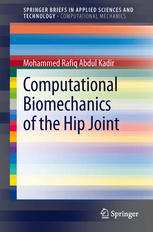

Most ebook files are in PDF format, so you can easily read them using various software such as Foxit Reader or directly on the Google Chrome browser.
Some ebook files are released by publishers in other formats such as .awz, .mobi, .epub, .fb2, etc. You may need to install specific software to read these formats on mobile/PC, such as Calibre.
Please read the tutorial at this link: https://ebookbell.com/faq
We offer FREE conversion to the popular formats you request; however, this may take some time. Therefore, right after payment, please email us, and we will try to provide the service as quickly as possible.
For some exceptional file formats or broken links (if any), please refrain from opening any disputes. Instead, email us first, and we will try to assist within a maximum of 6 hours.
EbookBell Team

5.0
20 reviewsThis book presents analyses of the most commonly reported failure modes of hip stems: loosening and thigh pain; both are attributed to the relative motion and instability at the bone-implant interface due to failure to achieve sufficient primary fixation. The book investigates various factors that could affect primary stability and therefore the long-term outcome of hip arthroplasty. The results complement experimental work carried out in this area as in-vitro experiments have several limitations that could be addressed through computer simulations.